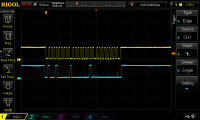


Actually, is never a mandatory to use the additional handlers. If mode is omitted, it is initialized following the normal Wire initialization and the additional handlers are still supported, but is not mandatory to use them. But this version supports a HARD_WIRE_MODE that shall be notified in the init. The normal Wire handle them automatically, always reading or writing in the shared buffer, transparently to the user.Īgain, follow the official Wire guide. It is done transparently in the official Wire (not present in Wire, new in the WireHard)Īll the functions marked as new in the WireHard are the core difference between the official Wire library. Used when the master still requires data which is not available from the shared buffer. Wire.onRequestDataNack(handler) -> handler takes no parameters.The official Wire does it transparently, retrieving the data from the buffer (not present in Wire, new in the WireHard) This byte can be generated from the slave in the handler at runtime without using the shared buffer. Wire.onRequestData(handler) -> handler returns a byte to be sent to master.Wire.onReceiveAdx(handler) -> handler takes no parameters, but the slave is notified to prepare itself to receive data in the next bus transaction, the official Wire does it transparently (not present in Wire, new in the WireHard).Wire.onReceiveDataNack(handler) -> handler takes no parameters but is used to notify the slave, since this received byte shall not be used (not present in Wire, new in the WireHard).Wire.onReceiveData(handler) -> handler takes last received byte for the slave runtime computation, but will also fill the data buffer with that byte, as the official Wire does transparently (not present in Wire, new in the WireHard).Wire.onRequest(handler) -> handler takes no parameters, but when called the slave prepares data to be sent using the standard Wire methods available, like read() and write() and whatever (official from Wire).Wire.onReceive(handler) -> handler takes the number of bytes received, here the data buffer can be read, since the master has terminated the communication (official from Wire).Here will be described only the differences between the original Wire and the HardWire, everything else is compliant with the guide linked above to the Wire. Practical deep examples are under development, but basically you can follow the official Wire guide. For a more detailed documentation, follow the GitHub links posted in the project's page. It can be added in you Arduino project by copying the HardWire folder to the library folder ofthe Arduino IDE and then selecting it to add in your sketch. This library can be downloaded from the GitHub links.


 0 kommentar(er)
0 kommentar(er)
